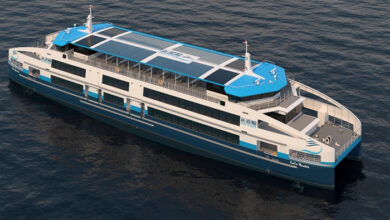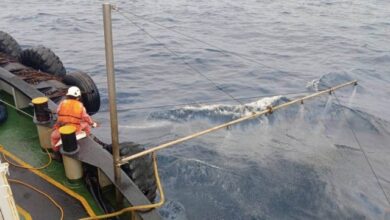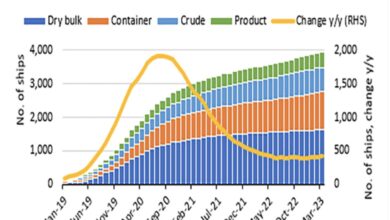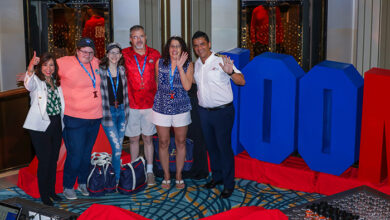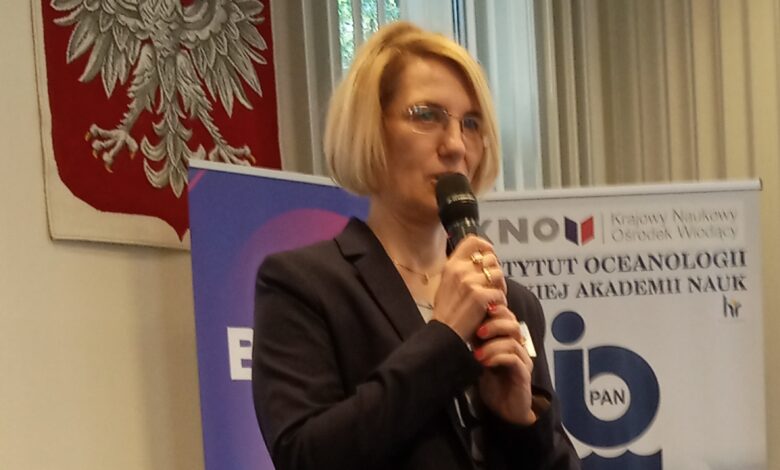
Around many issues of concern to the world such as the marine ecosystem , Using Scientists a satellite system and other issues the focus of an exclusive dialogue with Dr Hab. Miroslawa Ostrowska prof. IO PAN of The Institute of Oceanology of the Polish Academy of Sciences
Satellite observations providing up-to-date and relatively easily accessible information covering really large areas, seems to be an ideal tool for studying the marine environment. Therefore, they are more and more widely used by sea researchers. A good example of a modern and comprehensive research tool based on remote sensing is the SatBałtyk System.
In short, my interests are light and photosynthesis in the sea. These fundamental issues in the marine ecosystem, involving a series of complex processes, are extremely important for the functioning of the entire biogeosphere.

Marek Grzybowski: What are the tasks of The Institute of Oceanology of the Polish Academy of Sciences?

Dr hab. Mirosława Ostrowska, Prof. IOPAN:
The mission of our Institute is to seek, understand, and communicate the scientific understanding of the marine environment and the issues related to its protection and sustainable use. Our scientists and engineers achieve this by carrying out innovative, high-level scientific and technological research that further enhances our understanding of the environment, and provides expertise and new technologies which are then shared with the broader public and interested parties from the public and private sector.
Marek Grzybowski: What research does the Professor do?
Dr hab. Mirosława Ostrowska, Prof. IOPAN:
In short, my interests are light and photosynthesis in the sea. These fundamental issues in the marine ecosystem, involving a series of complex processes, are extremely important for the functioning of the entire biogeosphere. On the one hand, solar-induced photosynthesis of phytoplankton is the beginning of the food chain, at the end of which humans are. On the other hand, excessive growth of algae biomass, known as eutrophication, adversely affects marine ecosystems. In a group of marine physicists from our institute, together with colleagues from other research institutions, we study the optical properties of seawater, basic biophysical processes related to the photosynthesis of marine algae. We also develop contact and satellite optical methods for monitoring the marine environment.

Marek Grzybowski: Satellite technologies are used to study the oceans and the sea. How are ocean observations from satellites used?
Dr hab. Mirosława Ostrowska, Prof. IOPAN:
Satellite observations providing up-to-date and relatively easily accessible information covering really large areas, seems to be an ideal tool for studying the marine environment. Therefore, they are more and more widely used by sea researchers. A good example of a modern and comprehensive research tool based on remote sensing is the SatBałtyk System http://satbaltyk.iopan.gda.pl , which enables near real-time monitoring of the condition and changes of the Baltic Sea ecosystem.

It was developed by team of scientists from our institute, Gdańsk University, Szczecin University and Pomeranian University in Słupsk. These four Polish research institutions established the SatBałtyk Scientific Consortium and jointly maintain the System that has been providing daily maps showing spatial distributions of several dozen physical, chemical and biological environmental characteristic of our sea since 2015. Such a collection of data describing the Baltic ecosystem can not only serve for scientific analyses but can also support decisions regarding the economy, management and protecting of its resources.










